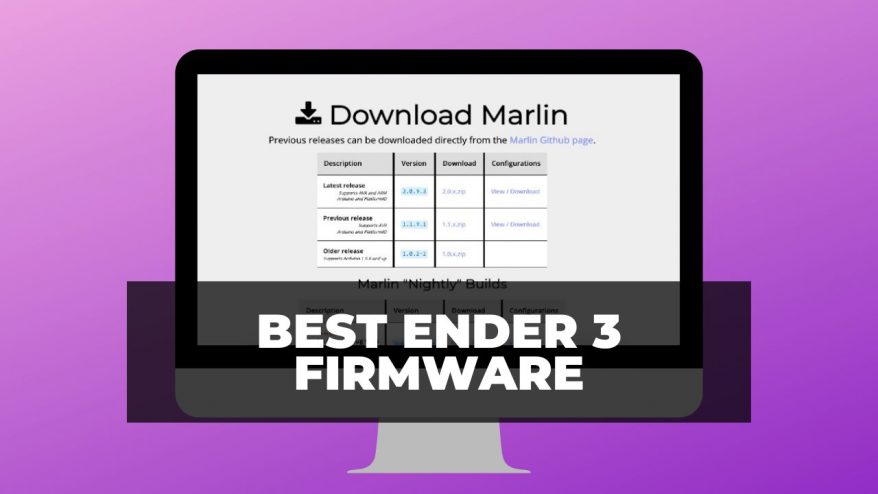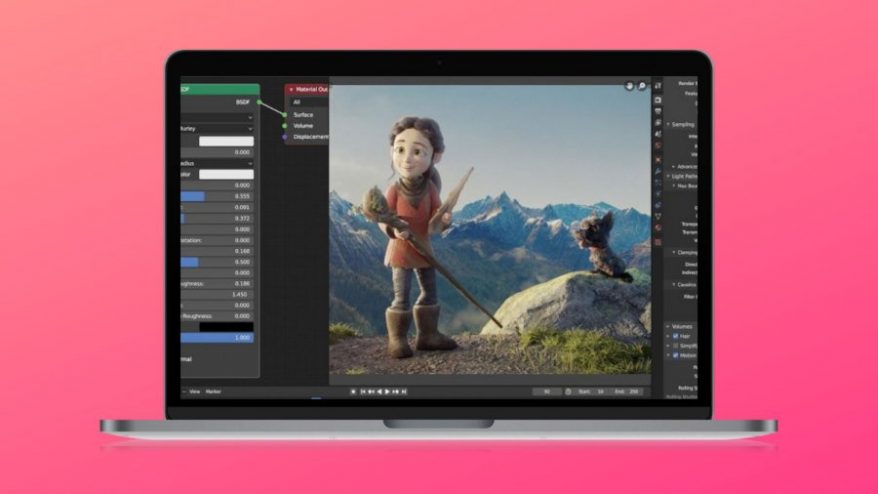
The Top 5 Best 3D Sculpting Software (Beginner & Expert)


At 3DSourced we’ve covered everything 3D printing and 3D since 2017. Our team has interviewed the most innovative 3D printing experts, tested and reviewed more than 20 of the most popular 3D printers and 3D scanners to give our honest recommendations, and written more than 500 3D printing guides over the last 5 years.
3D sculpting software and constructing digital 3D models is a massive industry taking over the professional world.
From manufacturing to media and entertainment, sculpting software has numerous purposes, and with computers coming with graphical performance comparable to that of specialized tech, 3D sculpting software has become more accessible and user-friendly than ever before.
Tools that were once restricted to commercial use, only used by specialists with top training on the most complex of animations, are now free to use in our own homes by anyone.
Best 3D Sculpting Software – Full Round-Up
Best Free 3D Sculpting Software
- Blender: Overall Best Free 3D Sculpting Software
- ZBrush Core Mini: Best Free Software for Beginners
Best Paid 3D Sculpting Software
What Is 3D Sculpting Software?
Sculpting software is a creative space where users can manipulate 3D objects by pulling, pushing, smoothing, pinching, grabbing, and editing the object until it takes its final form.
While the model itself is made up of either a mesh-based or voxel-based geometry, the sculpting process takes place through a history-based or direct modeling approach.
History-based is the process of creating the 3D model in steps, the layering of actions that eventually create your 3D image. Direct modeling is when you have the image displayed and can directly pull and push the image with your brush or mouse as you choose.
Regardless if you’re a professional looking for new software, or a beginner looking for a place to start, our list has information here for you.
In this article, we’re going to cover the top paid and free 3D sculpting software available today. We’ll go over key features, price points, and what software is best for you.
Now, if you’ve checked out our top 7 best 3D animation software, then some of these platforms will look familiar. Some sculpting software have animation uses that make them great for both areas, so there’s some overlap.
The Best Free 3D Sculpting Software
First, we’re going to explore the more pocket-friendly options for 3D sculpting software.
While these options may cost less, there’s no sacrifice in cutting-edge features or pipeline support, and we’re confident you’ll find much more than just the low price point alluring.
1. Blender – Overall Best Free 3D Sculpting Software
- Cost: Free
- Ideal for: Professionals to Hobbyists
- Compatibility: macOS, Windows, Linux
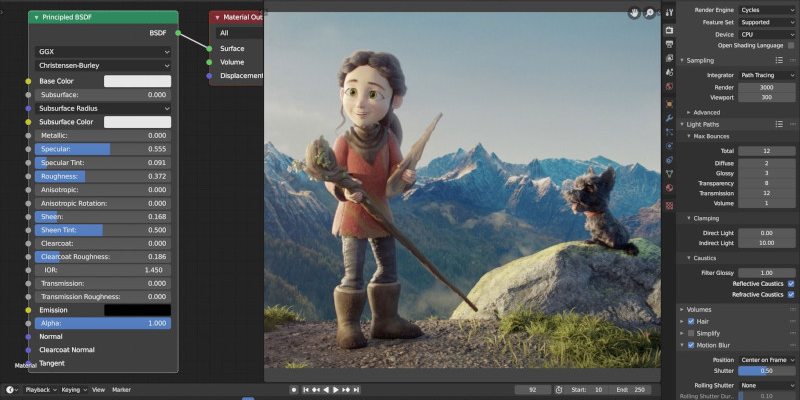
Pros
Free and open-sourced.
Manageable format.
An excellent choice for working on polygon mesh.
Cons
Does not support NURBS.
Blender is to 3D sculpting software what Jim Carrey is to comedy.
Inspiring casual users and commercial businesses since 1995, you’ll be hard-pressed to find an article recommending 3D software that doesn’t have Blender sitting happily at the top.
This free, open-source platform offers support throughout the entire sculpting process, for example, modeling, texturing, and rendering. It’s even used in game creation, video editing, motion tracking – the skillset of this platform is endless.
Especially with open-source allowing developers to jump in and create free software that rivals that of paid competitors.
Blender provides all of this in a manageable format. Beginners can tug and pull at the model without disrupting the underlying mesh, and any complexities of the platforms are explained in the companies educational YouTube portfolio.
Plus, it’s free! So, there’s no loss on your part if 3D sculpting isn’t for you. But it’s also jam-packed full of features and toolsets that even professionals will find inescapable value in.
It’s worth highlighting that this is an excellent choice for working on polygon mesh, but it does not support NURBS.
2. ZBrush Core Mini – Best Free Software for Beginners
- Cost: Free
- Ideal for: Beginners and those looking for detail and basics
- Compatibility: macOS, Windows
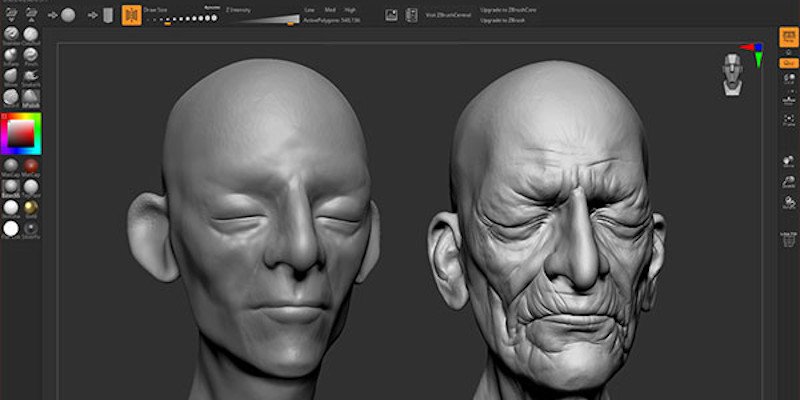
Pros
Pixol gives ZBrush users the ability to pack massive amounts of detail into their designs.
Easy learning curve.
Known for its powerful sculpting tools.
Cons
The free version is pretty toned down.
Created by Pixologic, the ZBrush Core Mini is known for its powerful sculpting tools that offer entire pipeline support.
Instead of using typical CAD programs to create its models, ZBrush programs use something called a “pixol”. Developed by Pixologic, every inch of the sculpture is made up of pixols, and each pixol contains information about depth, material, color, and composition.
This is what gives ZBrush users the ability to pack massive amounts of detail into their designs.
While ZBrush has a paid version that takes customizability to heart, the toned-down Core Mini makes it perfect for all ages that want to get into 3D sculpting.
Its more basic format gives it an easier learning curve but still integrates with Blender, creating a master platform where you get all the amazing benefits of large-scale designs, as well as the amazing detail-oriented features of ZBrush Core Mini.
The Best 3D Sculpting Software (Paid)
Now, it’s time to delve into our top picks for paid 3D sculpting programs.
With the 3D market growing at a rapid pace, finding the best sculpting software was no easy feat, but these programs had revolutionary interfaces we just couldn’t ignore.
3. Autodesk Triple Threat: Maya, Mudbox, & 3DS
You can’t talk about 3D sculpting software and not emphasize the industry favorite Autodesk.
Founded in 1982, Autodesk is a globally leading 3D design company that engineers software for a multitude of industries. They have not one but three sculpting programs that dominate the 3D modeling space, so we’ve consolidated them into one section.
Maya – Overall Best 3D Sculpting Software
- Cost: $1,700 per year or $215 per month
- Ideal for: Professional and Intermediate
- Compatibility: macOS, Windows, Linux

Pros
Known for its enhanced workflow and insane tool catalog.
Its strengths are in its character creations and movements as well as in rendering natural elements.
Can get expert precision using a pen and tablet and better control over detail.
Cons
Not for beginners.
First, we have Maya. If there’s one thing you take away from this list, it’s that if you’re looking to be a professional in the 3D sculpting community, you need Autodesk Maya.
This award-winning software is complete with modeling, simulation, and animation capabilities and is known for its enhanced workflow and insane tool catalog. It was one of the first 3D software that introduced fur and hair to their platform.
Its strengths are in its character creations and movements as well as rendering natural elements such as water, fire, earth, and wind. You can model clay or other materials, but the actual 3D virtual surface is constructed of polygons.
The polygon surface then gives way to animation or 3D printing if you choose.
It’s recommended to use this platform with a graphics tablet for the best experience. Using a pen and tablet gives you expert precision and better control over detail. Though it also works with a standard mouse.
Maya supports Mudbox integration, another Autodesk software, and there you can access the finer details and really hone in on unique characteristics.
With a $1,700 a year subscription rate, this platform isn’t for dabblers or those not interested in taking advantage of the extra features.
But, this is the perfect choice for those who want to create and breathe life into 3D models and get experience handling software used at the likes of Pixar and IDEG.
Mudbox – Most Affordable Professional Software
- Cost: $90 per year or $10 per month
- Ideal for: Professional and Intermediate Users looking for a cost-effective option
- Compatibility: macOS, Windows, Linux
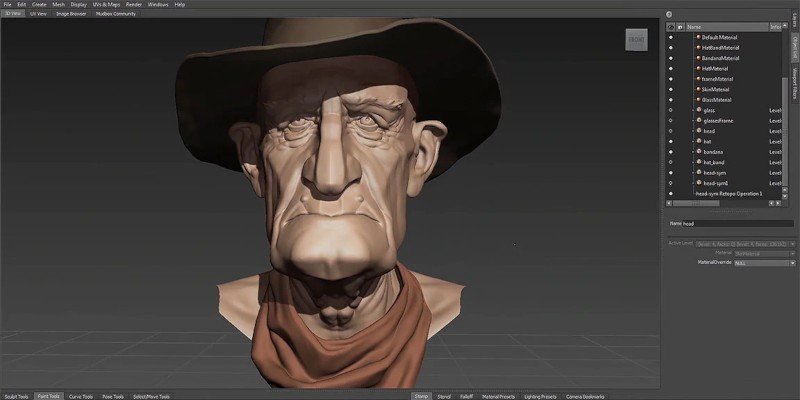
Pros
Excellent for sculpting and painting 3D models.
Lends itself to extreme detailing as the image can be divided into volumes and then sculpted on each polygon.
Similar power to Maya for a cheaper price.
Cons
Not good for animation.
Straight off the back, we notice a significant decrease in cost, but that doesn’t mean a decrease in capabilities.
Mudbox is a high-poly modeling software that’s excellent for sculpting and painting 3D models. You can even paint maps straight onto your meshes, one of their distinctive features.
Mudbox’s strengths lie in its digital sculpting, texture painting, and displacement, hence why we suggested it’s a great place to export your Maya designs to enhance details.
Its history-based software also lends itself to its extreme detailing as the image can be divided into volumes and then sculpted on each polygon.
If you don’t care for animation, but want the power of Maya for a more agreeable price, then Mudbox is a clear winner.
Autodesk 3ds Max – Overall Best Windows Software
- Cost: $1,700 per year or $215 per month
- Ideal for: Professionals and Students
- Compatibility: Windows

Pros
Boasts seamless simulations and character creation.
Supports Autodesk’s standard polygon construction, but also NURBS and patch surfaces.
Much more digestible learning curve than Maya.
Cons
Windows-only.
Steep price.
To end our tour of Autodesk, we’re topping off this review with the 3ds Max.
3ds Max is a Windows-only software, but easily the best 3D sculpting software for Windows. It has a more digestible learning curve than Maya and is known for its emphasis on fluidity.
A fan-favorite for game makers, the 3D modeling system boasts seamless simulations and character creation, having strengths in hair, cloth, skeleton, and bipedal movement.
It supports Autodesk’s standard polygon construction, but also NURBS and patch surfaces.
In case there’s something you’re looking for not already included in the package, 3ds Max is compatible with an impressive number of plugins. However, tread carefully, if you use too many plugins on a project, they can interact with each other and negatively affect your designs.
While the price is certainly on the steeper side, there is a free trial version and a discount when you purchase a three-year subscription. It’s also worth noting students can get this software for free.
4. Modo – Most Well-Rounded 3D Sculpting Software
- Cost: $1,578 perpetual license or $359 per year
- Ideal for: Expert and Intermediate Users looking for flexibility
- Compatibility: macOS, Windows, Linux

Pros
Versatile and dynamic.
Can be used to edit specific parts of the process.
Supported by Modo’s third-party integrations and full pipeline support.
Quick access buttons give it an easier learning curve
Cons
No major drawbacks.
Now that Autodesk is out of our system, it’s time to meet some other industry bigwigs.
Founded by Foundry in 2004, Modo is a creative software solution that aims to tackle the problem of creating software that works for users from all different industries and disciplines. Originally focused solely on media and entertainment sectors, Foundry hopes to change that narrative by becoming a one-stop-shop for all.
This is supported by Modo’s third-party integrations and full pipeline support, making it versatile and dynamic.
It can be used to edit specific parts of the process, like texture painting and modeling, or support the entire way through, from animation to rendering, all in the same place.
While Autodesk focuses on vast toolsets, Modo’s emphasis is on speed, with their quick access buttons giving it an easier learning curve.
Their strength is in texturing and rendering, but with the ability to integrate with third-party plugins, you can manipulate its strengths to be whatever you need, making it a clever choice for anyone looking for flexibility in their software.
5. ZBrush – Most Creative 3D Sculpting Software
- Cost: $895 for a perpetual license or $39.95 per month
- Ideal for: Professionals and Intermediate Users looking for creative freedom
- Compatibility: macOS, Windows

Pros
Exceptional customizability.
Offers specialized tools to help transfer the model to 3D printing.
Offers online training materials.
Cons
Not the most user-friendly.
Last on our list of paid-for software is representing Mudbox’s rival, ZBrush.
Continuing to utilize the pixol, ZBrush is where rogue creators come to play as this software’s exceptional customizability lets users sculpt literal clay and render complete organic shapes with the utmost detail.
You can craft entire figures, clothes, and props ready for rendering, and it has paintbrushes that let you brush cloth and stitches. It even offers specialized tools to help transfer the model to 3D printing.
Because it’s easily integrated into Maya, Blender, and other programs, some users prefer to develop the large-scale product elsewhere and then import it to ZBrush for adding finishing touches.
This option is not the most user-friendly, though it does offer online training materials, and for genuine artistic freedom, it’s well worth the learning curve.
And if you’re interested in learning VFX, we recommend the best software for virtual effects.



